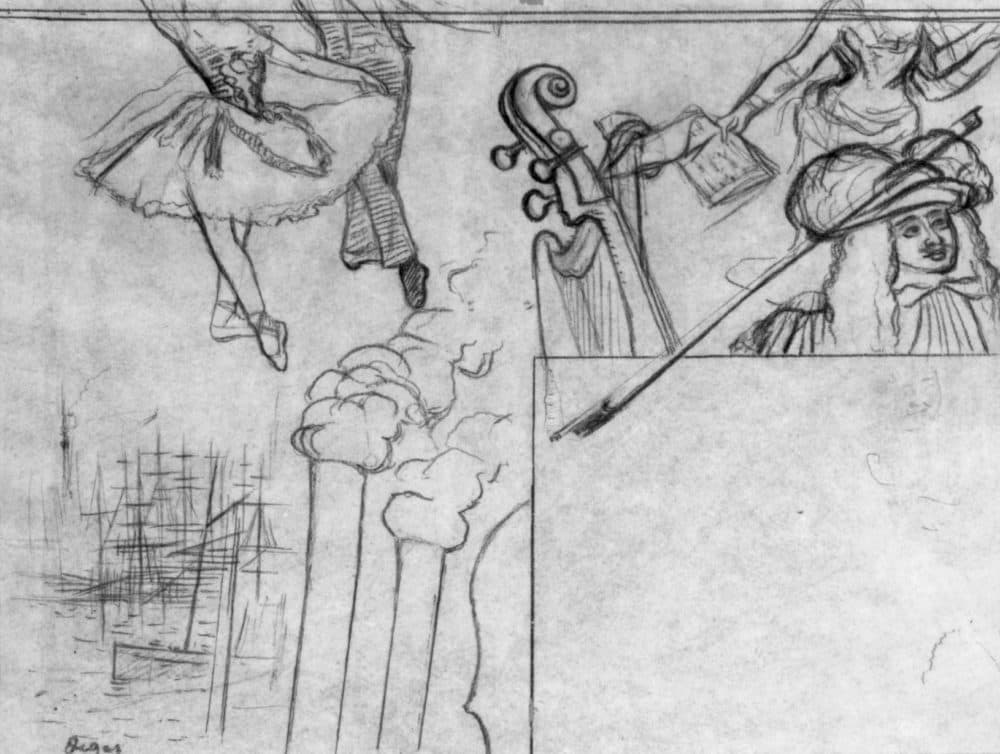Advertisement
< Back To Missing Art
'Program For An Artistic Soirée,' By Edgar Degas

1884
Five works on paper by Edgar Degas were stolen from cabinets in the Short Gallery, the passageway that leads into the large Tapestry Room on the Gardner’s second floor. They were stored with other prints and drawings in cabinets designed by Mrs. Gardner herself. Although he began as a painter of Biblical and historical scenes, Degas, like Manet (who was two years his senior), became famous for his depictions of ordinary life — most notably images of dancers, jockeys, and racing horses.
This piece, along with "Study 2," are 12-by-8-inch charcoal sketches from 1884, both studies for a program “for an artistic soiree,” one a little more finished than the other. A square in the lower right-hand corner is left blank, presumably the space for information about the soiree. The figures surrounding the empty space include a dancing couple pointing their toes (the woman in a tutu and toe shoes), a woman holding bound pages in one hand (ironically, in the sketchier version, she’s more clearly a singer holding a score), the upper body of a man in an 18th-century hat and wig, sailing ships in a harbor (so sketchy in the less finished version it’s impossible to tell what the drawn lines represent), two smokestacks belching smoke, a harp partially concealing a bass fiddle behind it, with the fiddle bow illusionistically drawn over (rather than behind) the upper part of the blank square. These pages are both charming and puzzling. What kind of fun soiree would such disparate images suggest?
— Written by Lloyd Schwartz